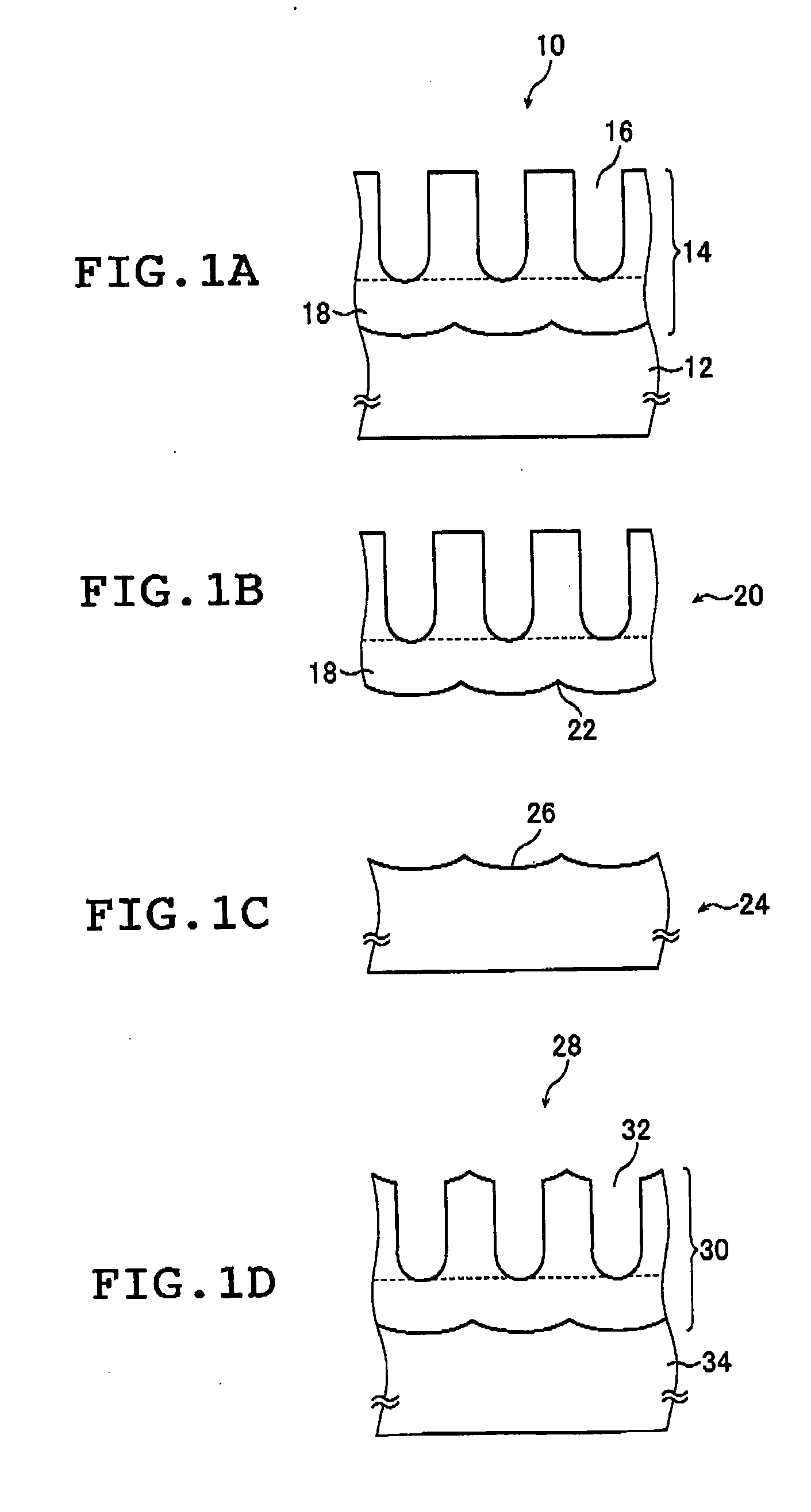Method for producing structure
a technology of structure and method, applied in the field of microstructure, can solve the problems of requiring a long time of several hours, affecting the quality of anodized layer, and the ineffective use of anodized layer, and achieve the effects of reducing time, low surface roughness, and high gloss
- Summary
- Abstract
- Description
- Claims
- Application Information
AI Technical Summary
Benefits of technology
Problems solved by technology
Method used
Image
Examples
examples
[0407] Next, the present invention is described in more detail with reference to Examples relating to aspect (I) of the present invention. However, aspect (I) of the present invention is not limited to such Examples.
1. Production of Structure
examples 1 to 10
[0408] An aluminum substrate was subjected to a mirror finishing treatment, a self-ordering anodizing treatment, and a reverse electrolysis in this order to obtain a structure composed of an anodized layer, and the substrate. The resulting aluminum substrate was subjected to a main anodizing treatment, a pore widening treatment, a sealing treatment, a surface treatment, and an electrodeposition in this order to thereby obtain a structure composed of the aluminum substrate having micropores which are sealed with a metal.
[0409] Each treatment will be described below in more detail.
(1) Substrate
[0410] The following substrate was used for the production of the structures.
[0411] Substrate: a high purity aluminum available from Wako Pure Chemical Industries, Ltd. having an aluminum purity of 99.99 wt % and a thickness of 0.4 mm.
(2) Mirror Finishing Treatment
[0412] The substrate was subjected to the following mirror finishing treatment.
[0413] The mirror finishing treatment was con...
examples 11 and 12
[0437] In these Examples, the aluminum substrates used were substrate 7 and substrate 10 used in the Examples corresponding to aspect (II) of the present invention as described later. The substrate was subjected sequentially to the self-ordering anodizing treatment and the reverse electrolysis as described below to obtain a structure composed of an anodized layer and the substrate as left. The thus obtained aluminum substrate was further subjected to the main anodizing treatment, the pore widening treatment, the sealing treatment, the surface treatment, and the electrodeposition treatment in this order to produce a structure composed of the aluminum substrate having the micropores sealed with a metal. The substrate used in Example 11 was substrate 7, and the substrate used in Example 12 was substrate 10.
[0438] The treatments are described in detail.
(1) Self Ordering Anodizing Treatment (Recess Formation)
[0439] Recesses serving as starting points for micropore formation in the ma...
PUM
| Property | Measurement | Unit |
|---|---|---|
| pore diameter | aaaaa | aaaaa |
| pore diameter | aaaaa | aaaaa |
| pore diameter | aaaaa | aaaaa |
Abstract
Description
Claims
Application Information
 Login to View More
Login to View More - R&D
- Intellectual Property
- Life Sciences
- Materials
- Tech Scout
- Unparalleled Data Quality
- Higher Quality Content
- 60% Fewer Hallucinations
Browse by: Latest US Patents, China's latest patents, Technical Efficacy Thesaurus, Application Domain, Technology Topic, Popular Technical Reports.
© 2025 PatSnap. All rights reserved.Legal|Privacy policy|Modern Slavery Act Transparency Statement|Sitemap|About US| Contact US: help@patsnap.com


